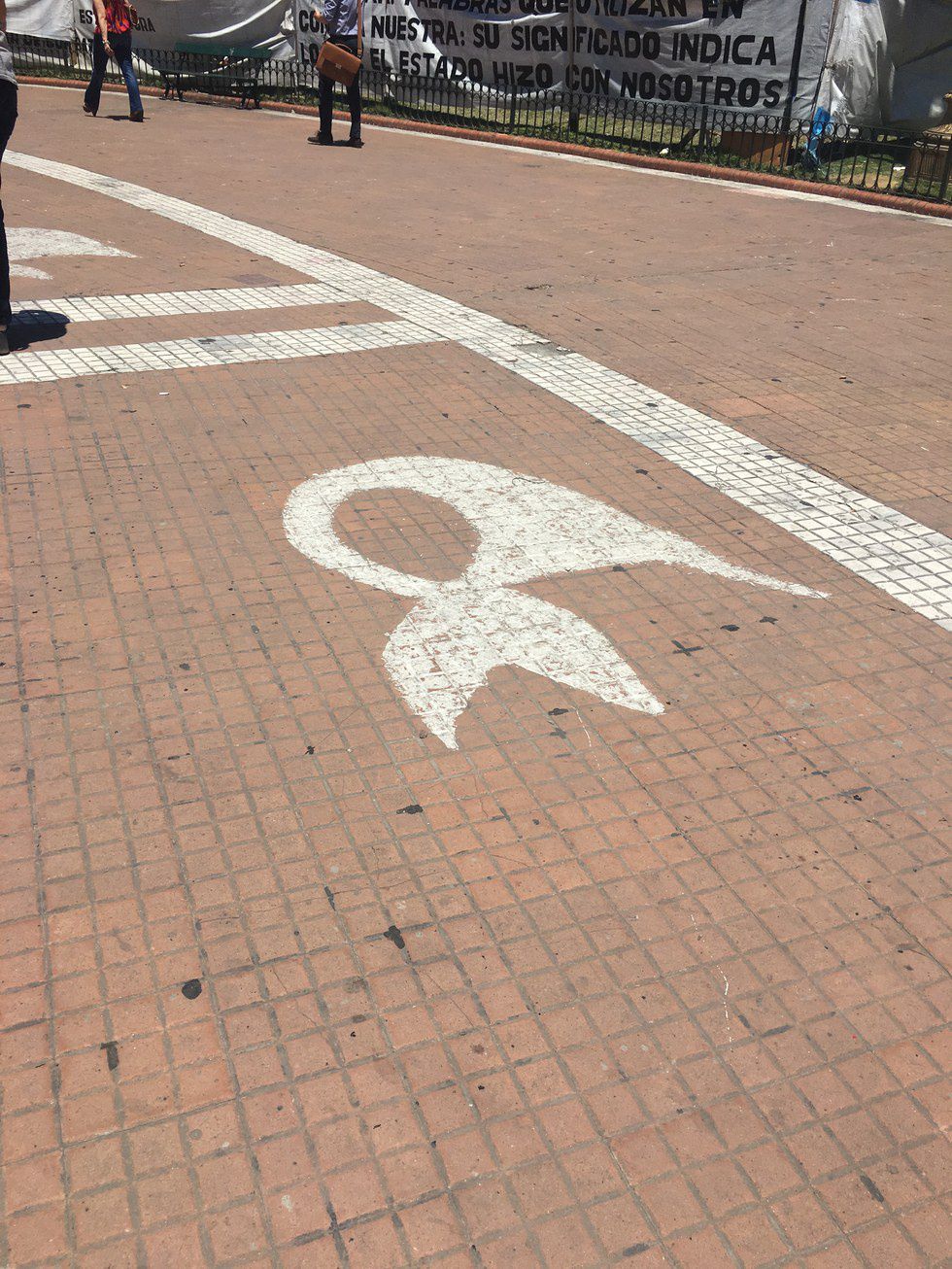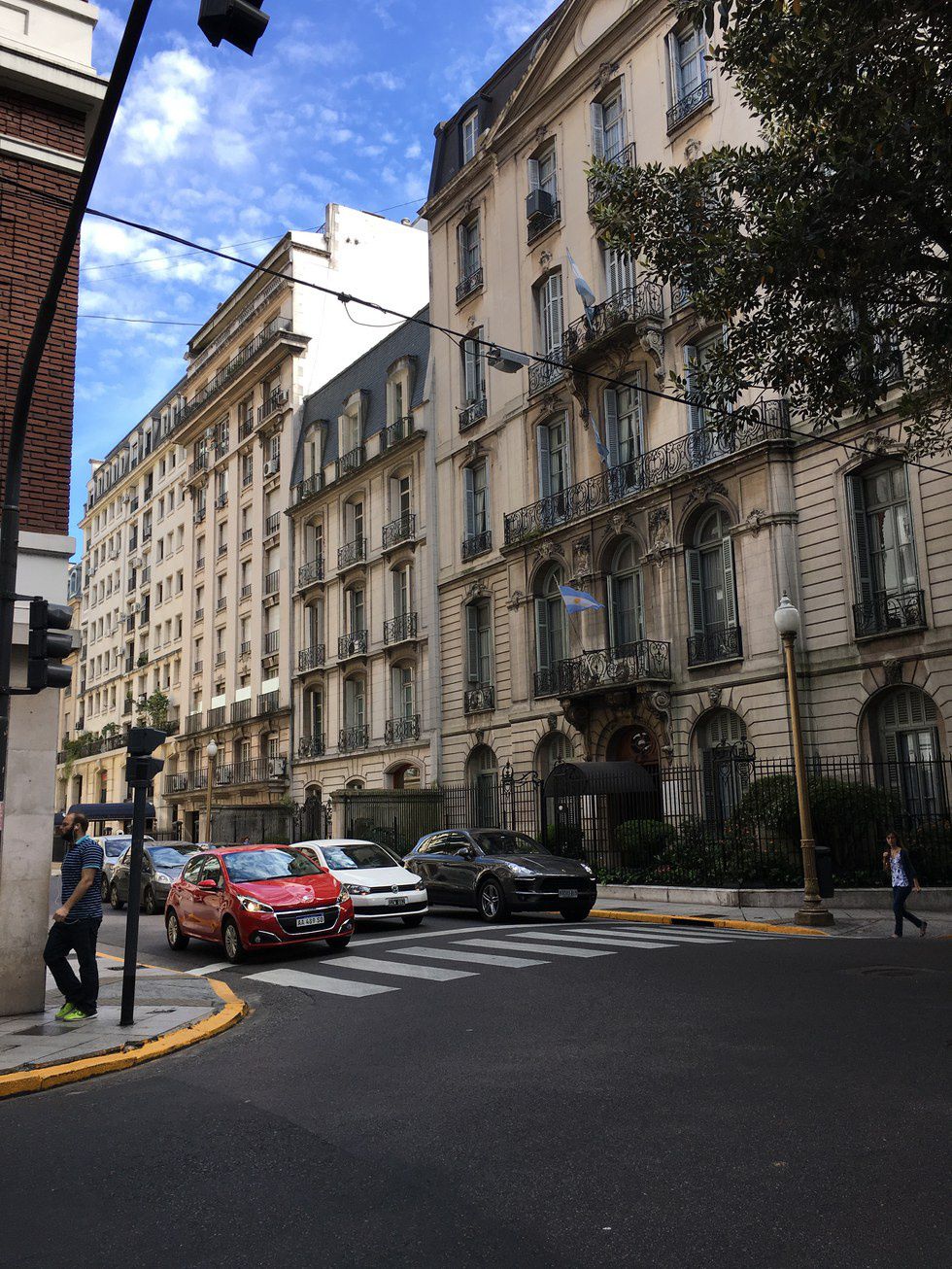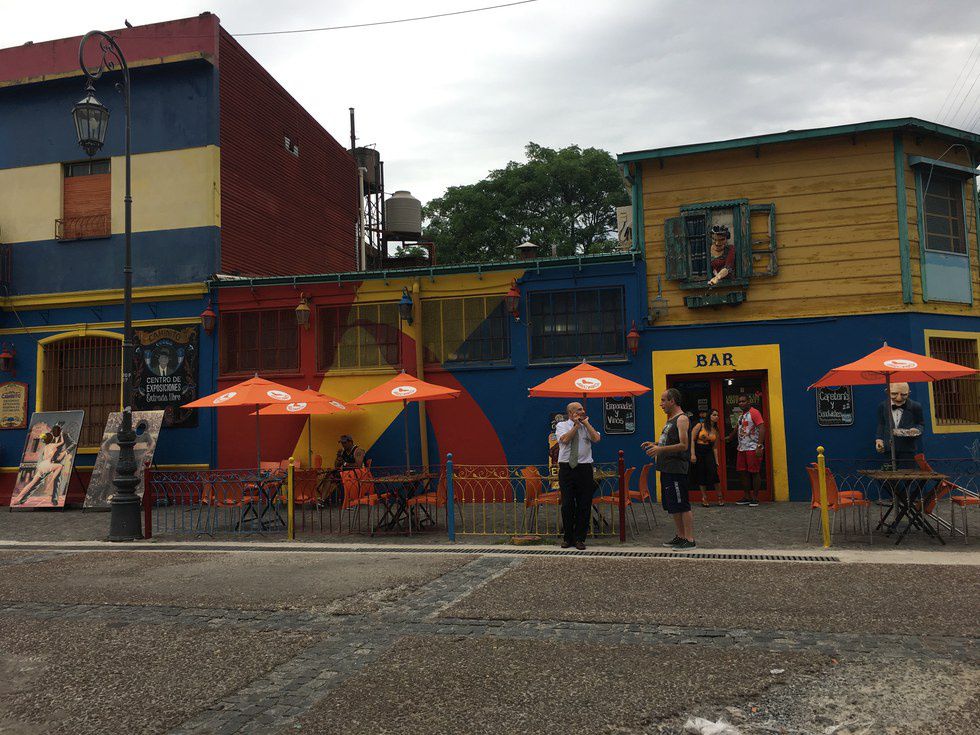I was lucky enough to spend my Thanksgiving weekend in the biggest city in Argentina, Buenos Aires. After exploring Montevideo in Uruguay, Santiago in Chile, it was time for me to finally visit Argentina’s capital, home to the country’s rich cultural and political history.
With a group of six other girls, I visited some of the city’s main touristy attractions, including the Casa Rosada, which is equivalent to our White house, and the Plaza de Mayo, the city’s central plaza. After learning about the Madres de la Plaza de Mayo who protested the disappearances of their children during the military dictatorship, it was amazing to see the very place where these protests still happen every week. Mothers and grandmothers gather every Thursday afternoon to still protest the disappearances of their children and grandchildren during the brutal dictatorship in the 1970s.
The plaza is covered in “panuelo,” or handkerchief paintings on the floor to signify the identity of the Madres and their continual peaceful protest against these disappearances. To stand in a place where I know so much history has occurred and still occurs today was surreal.
Buenos Aires was very European looking, especially in Recolecta, where we stayed for three nights. The buildings were beautiful and one could tell by walking around that Buenos Aires definitely has more diversity than Mendoza in terms of immigrants and also the number of tourists visiting the city. The city is huge, bustling with cars, buses, and people all over. We could see Eva Perón’s face on huge skyscrapers, and even visited her cherished grave in a beautiful cemetery.
We also visited Boca and saw the stadium of Boca Juniors, one of Argentina’s national soccer teams. The village was covered in vibrantly colored buildings, rainbow staircases, and life-size figurines of Eva Perón, Pope Francis (who is Argentine!) and Carlos Gardel, the legendary author of tango music. We of course bought our fair share of Boca apparel on the way through the Caminito, a touristy hotspot and a little street with tons of local vendors and a street museum.
We also walked through a Sunday market and saw the skillful artisans painting landscapes, sewing blankets, and fixing shoes. We actually saw one paralyzed man paint stunning images with the paintbrush in his mouth. If that isn’t talent, I don’t know what is.
We learned how to navigate the subway system and even the bus system throughout the city. We also visited Palermo, a barrio, or neighborhood with tons of restaurants and a beautiful park. We enjoyed some delicious sushi, which was much better than the sushi in Mendoza.
Seeing Buenos Aires was, as I’ve mentioned, surreal and amazing. After spending three and a half months living in Mendoza and learning about the big city and all its rich history, it was truly special to finally visit and experience life in Buenos Aires. I can definitely see myself traveling there again in the future and spending more time exploring the city and all it has in store.






















